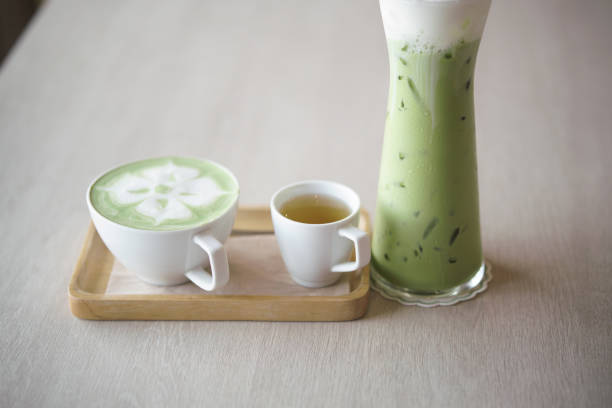Today, I’d like to talk to you about “Matcha Vs Gyokuro”. Japan’s tea culture has a long history filled with tradition, elaborate ceremonies, and deep respect for the simple tea leaf. Tea drinking is a cherished art form in Japan and is deeply ingrained in their social and spiritual life. Among the various teas enjoyed in Japan, Matcha and Gyokuro stand out as the most esteemed, providing unique insights into the country’s tea legacy.
Matcha, a finely powdered green tea made from specially cultivated leaves, is more than just a drink; it represents mindfulness and ritual in Japanese culture. This vibrant green tea is whisked into a frothy, emerald-colored liquid that delights the senses with its rich, savory taste. Making Matcha is a serene ritual representing balance, reverence, cleanliness, and peace. When consumed during traditional tea ceremonies, Matcha fosters a profound connection between the participant and the present moment, turning each sip into a contemplative experience.
On the other hand, Gyokuro represents the pinnacle of Japanese tea artistry. This tea, grown in the shade with great care, is shielded from direct sunlight for several weeks before being harvested. This meticulous process results in a sweeter, more delicate flavor characterized by a smooth texture and deep, jade-green color. Gyokuro’s luxurious flavor and aroma are a testament to the efforts of tea artisans who have perfected its cultivation.
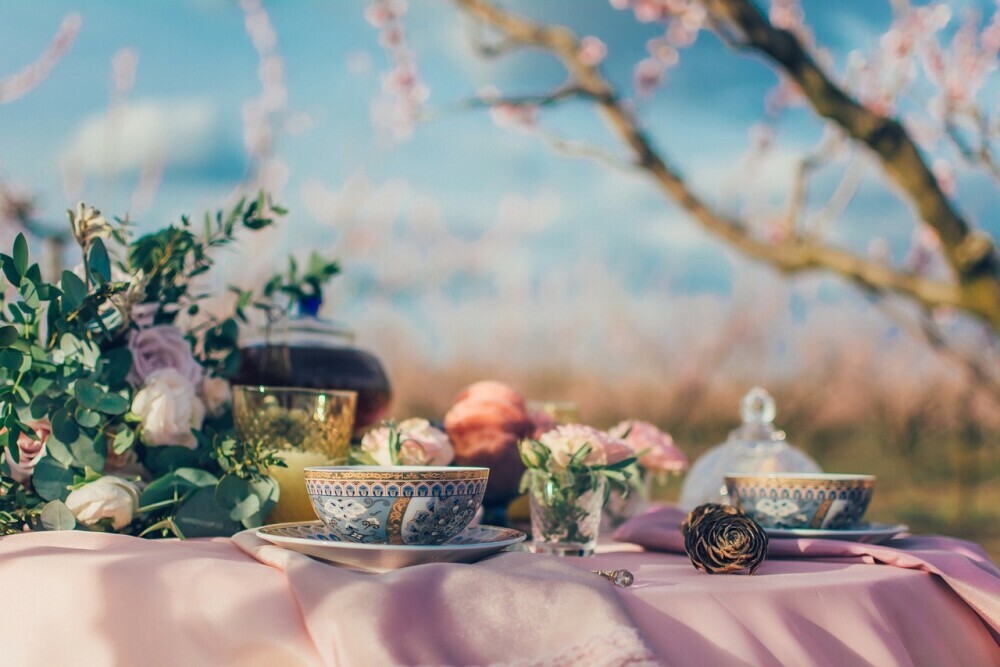
The well-documented health benefits of green tea, particularly Matcha and Gyokuro, add to their appeal. These teas are rich in antioxidants and are known to boost metabolism, improve cognitive function, and enhance overall well-being. Green tea catechins have potent properties that help in fighting against free radicals, thereby decreasing the likelihood of chronic illnesses. Regularly consuming these premium teas can improve mental clarity, a robust immune system, and a more vibrant, healthier life.
As you immerse yourself in Japanese green teas, let Matcha and Gyokuro lead you on a flavor, tradition, and serenity journey. Embrace the rich cultural heritage and health benefits these exceptional teas offer, and uncover why they are celebrated as the finest gems in Japan’s tea tradition.
Unveiling Matcha: A Vibrant Powerhouse of Flavor and Nutrition
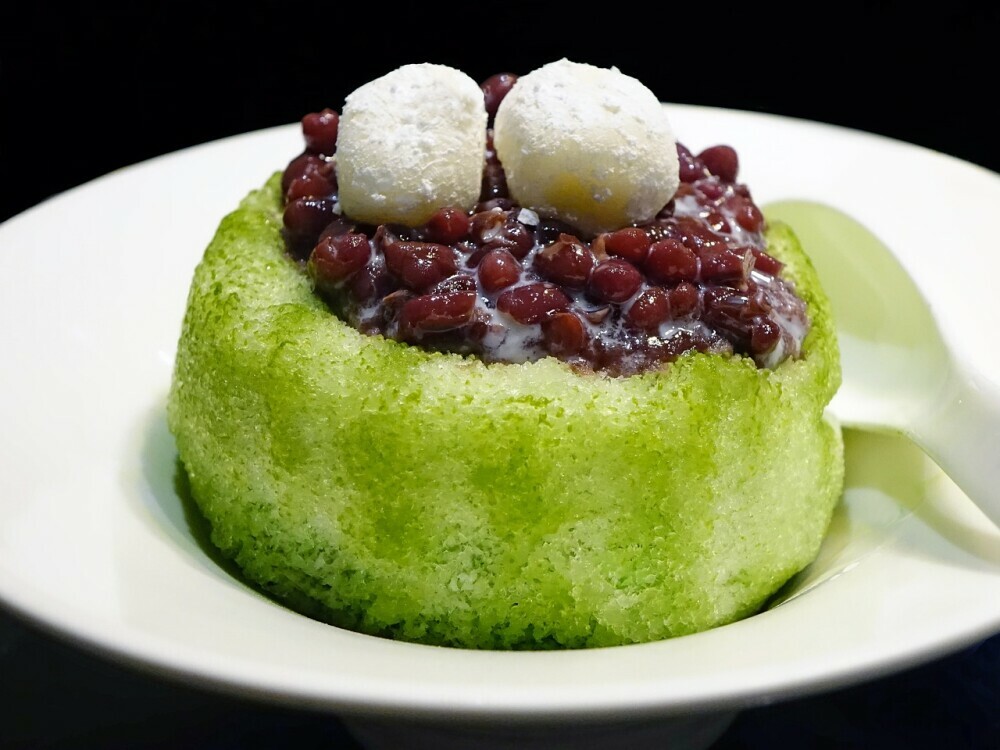
Matcha tea is more than just a drink; it symbolizes Japan’s historical and ceremonial traditions with its vibrant green color and rich flavor. Originally from the Tang Dynasty in China and later perfected in Japan, Matcha has been a significant part of Japanese tea ceremonies for many years. These ceremonies focus on mindfulness, respect, and appreciating simplicity. The careful preparation of Matcha during these ceremonies fosters a strong connection between the participant and the present moment, turning each sip into a meditative and spiritual experience.
The process of making Matcha starts with shading the tea plants. The plants are covered about three to four weeks before harvesting to prevent direct sunlight, increasing the chlorophyll content and producing a deeper green color in the leaves. This shading process also boosts the amino acids, particularly L-theanine, which contributes to the unique umami flavor of the tea. After the harvest, the leaves undergo steaming to prevent oxidation, then they are dried, and the stems and veins are removed. The resulting leaf material, called Tencha, is ground into a fine powder using stone mills, creating the Matcha powder that we are familiar with.

Nutritionally, Matcha is exceptional. Unlike ordinary green tea, where leaves are steeped and discarded, Matcha involves consuming the entire leaf, leading to a higher concentration of nutrients. Rich in antioxidants, especially catechins, Matcha helps in fighting free radicals and reducing inflammation. Its high L-theanine content induces relaxation and mental clarity, counterbalancing the stimulating effects of caffeine. This unique combination improves cognitive function and offers a calm, focused energy. Additionally, Matcha supports metabolism, detoxification, and enhances the immune system, making it a valuable addition to a balanced diet.
Besides being used in tea ceremonies, Matcha is also remarkably versatile in cooking. Its distinctive flavor profile, with a hint of sweetness balanced by a slight bitterness, makes it a popular ingredient in various recipes. The options are endless, from Matcha lattes and smoothies to baked goods and savory dishes. By incorporating Matcha into recipes, dishes acquire a vibrant green color and inherit its distinct taste and nutritional benefits. Whether whisked into a traditional tea or blended into innovative culinary creations, Matcha continues to captivate and nourish, representing Japanese tea culture’s rich cultural heritage and health advantages.
Gyokuro: The Refined Elixir of Japanese Tea Connoisseurs
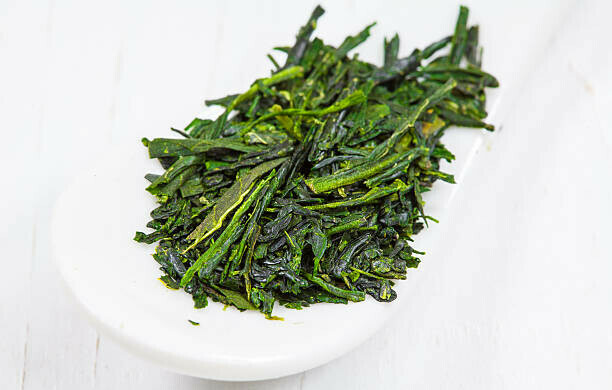
Gyokuro, often considered the highest quality of Japanese green tea, is a sophisticated beverage highly valued by tea enthusiasts worldwide. Its rich history dates back to the 19th-century Edo period, when innovative tea growers in Uji, Japan, developed a unique cultivation method that would have a lasting impact on green tea production. “Gyokuro” translates to “jade dew,” a fitting name for a tea that embodies grace and refinement in every sip.
The exclusivity of Gyokuro begins with its meticulous cultivation process. Unlike most green teas, Gyokuro is grown in the shade, a technique that significantly enhances its flavor and aroma. Approximately three weeks before harvesting, tea plants are protected from sunlight using straw mats or synthetic screens, which effectively block around 90% of the light. This shading method makes the plants work harder to photosynthesize, resulting in a higher concentration of chlorophyll and amino acids, especially L-theanine. The following creates a more prosperous, sweeter, and more pronounced umami flavor and a velvety, smooth consistency that distinguishes it from other green teas.
Brewing Gyokuro requires a gentle approach to fully appreciate its subtle nuances. The recommended brewing temperature for Gyokuro is notably lower than that of other green teas, typically around 50-60°C (122-140°F). Using cooler water helps bring out the tea’s delicate flavors without introducing bitterness. The steeping time is also essential, with an ideal duration of approximately two to three minutes. This careful brewing process allows the tea’s intricate layers of flavor to unfold, offering an understated and profound delightful experience.

Regarding caffeine content, Gyokuro contains more caffeine than most other green teas but slightly less than Matcha. The higher caffeine content and the calming effects of L-theanine provide a well-balanced energy boost that enhances mental clarity and focus without the typical jitteriness associated with coffee. Additionally, Gyokuro is abundant in antioxidants, particularly catechins, contributing to its health benefits. This text showcases the antioxidants found in Gyokuro, which contribute to fighting free radicals, decreasing inflammation, and promoting general well-being. These qualities make Gyokuro a delightful beverage and a beneficial component of a health-conscious lifestyle.
Comparing Gyokuro with Matcha, both teas are recognized for their distinct qualities and health benefits. While Matcha offers a more intense and concentrated experience, Gyokuro provides a subtler and more refined flavor journey. Each sip of Gyokuro reflects the skill and commitment of Japanese tea growers, encapsulating centuries of tradition and a deep reverence for the craft. Whether you are a seasoned tea enthusiast or a curious newcomer, Gyokuro invites you to enjoy its exquisite flavor and explore the tranquil beauty of Japanese tea culture.
Matcha Vs Gyokuro: A Comparative Exploration
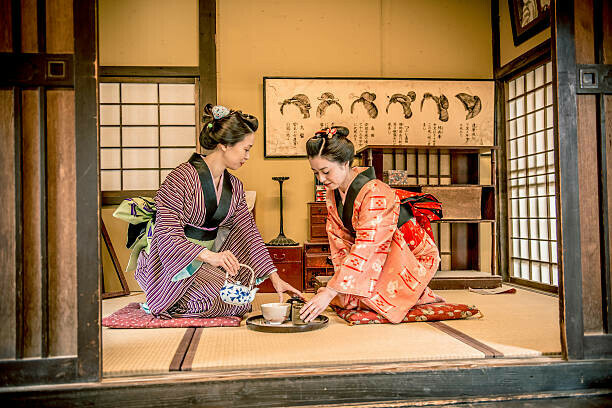
Exploring the vibrant realm of Japanese green teas, Matcha and Gyokuro stand out as two of the most highly regarded varieties, each with unique characteristics and attractions. The flavors of these teas are distinct, offering a range of tastes that please the palate in their own particular manners. Matcha is a finely ground powder with a robust and earthy flavor, smooth consistency, and a hint of sweetness, paired with a deep underlying umami richness. Its bold nature delivers an exciting experience, often described as a “green explosion” on the taste buds. On the other hand, Gyokuro presents a more subtle and intricate taste. It offers a gentle sweetness, a smooth texture, and a refined umami flavor that lingers delicately, creating an elegant and peaceful sipping experience.
The cultivation methods of Matcha and Gyokuro are crucial to their distinct characteristics. Both teas are grown in the shade, but their paths diverge significantly from that point. Matcha plants are shaded for approximately three weeks before being harvested, enhancing their chlorophyll and L-theanine content. After harvesting, the leaves are steamed, dried, and ground into a fine powder, preserving all the nutritional benefits. Meanwhile, Gyokuro undergoes an even lengthier shading period of about three to four weeks. This prolonged shading process intensifies the sweetness and umami flavors while reducing bitterness. The leaves are then meticulously rolled and dried, preserving their pristine condition for brewing. The shading technique for both teas enhances the amino acids, particularly L-theanine, resulting in their distinctive rich flavors and health benefits.
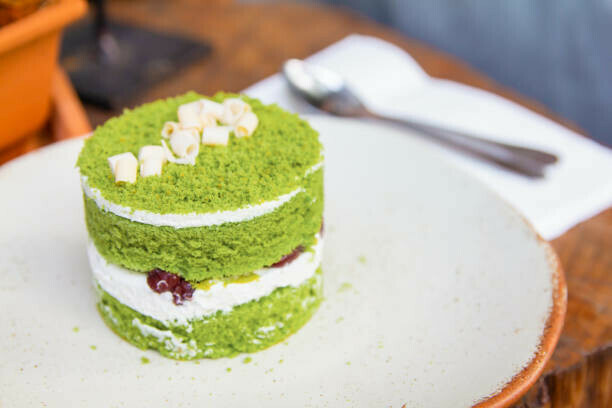
In terms of versatility, Matcha and Gyokuro excel in different areas. Matcha’s powdered form makes it extremely versatile beyond traditional tea ceremonies. It is frequently used in lattes, smoothies, desserts, and various culinary creations, adding a unique green color and a burst of flavor. Gyokuro, primarily enjoyed as a luxurious brewed tea, can also be used in more refined culinary applications, such as gourmet dishes and sophisticated tea pairings, highlighting its delicate and exquisite taste.
Regarding pricing, both teas hold significant value due to their complex cultivation processes and the expertise required to produce them. Matcha, mainly ceremonial grade, tends to be higher due to the labor-intensive grinding process and the quality of the leaves used. Gyokuro, considered one of the highest grades of Japanese green tea, commands a premium price due to its extended shading period and meticulous care during its cultivation and production. The value of each tea reflects the dedication of Japanese tea artisans who have honed these traditions over centuries.
In summary, whether you are attracted to Matcha’s bold, versatile appeal or the delicate, refined elegance of Gyokuro, both teas offer a rich array of flavors and experiences. Each sip encourages exploration of the depth and beauty of Japanese tea culture, making them cherished additions to any tea lover’s collection.
Choosing Between Matcha and Gyokuro: Tips for Tea Enthusiasts
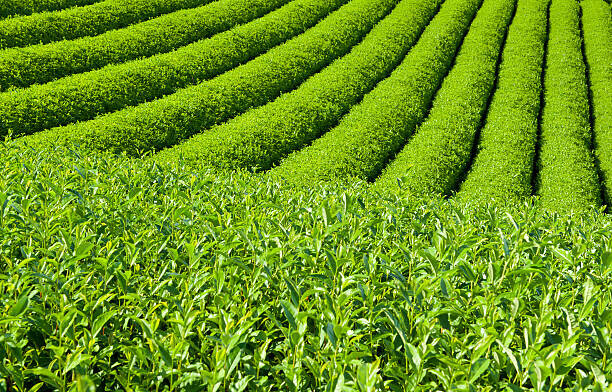
Going for Matcha or Gyokuro can be an enjoyable dilemma for tea lovers, as each provides distinct experiences suited to various taste and mouthfeel preferences. Matcha is an excellent choice for those who crave a bold and vibrant taste. Its rich, earthy flavor with a creamy texture and slight sweetness is perfect for those who enjoy a more robust and energizing tea experience. Matcha’s versatility makes it a popular ingredient in various culinary creations, from lattes to desserts, providing a creative outlet for tea lovers to explore.
Gyokuro, on the other hand, is ideal for those who appreciate subtlety and sophistication in their tea. Its delicate sweetness, smooth texture, and profound umami flavor create a serene and refined sipping experience. Gyokuro’s gentle taste is a testament to its meticulous shading process, making it a perfect choice for a relaxing and meditative tea session.
When selecting high-quality Matcha and Gyokuro, authenticity is critical. For Matcha, look for vibrant green powder with a fine texture, sourced from reputable regions in Japan such as Uji or Nishio. Brands like Ippodo, Encha, and Aiya are known for their premium Matcha, ensuring you get the best flavor and health benefits. For Gyokuro, seek deep green leaves with a glossy sheen, indicating freshness and proper shading. Renowned brands like Yame and Shizuoka offer exceptional Gyokuro that embodies this tea’s exquisite taste and aroma.
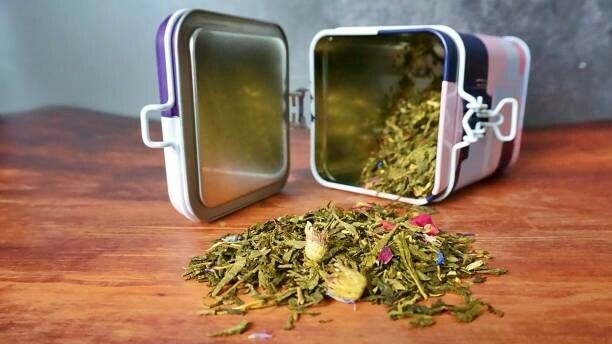
Proper storage and preparation are essential to preserving the benefits of both Matcha and Gyokuro. Remember to store Matcha in an airtight container in a cool, dark place to maintain its vibrant color and flavor by preventing oxidation. Gyokuro should also be kept in a sealed container, away from light and moisture, to retain its delicate aroma and taste. When preparing Matcha, use water heated to around 80°C (176°F) and whisk vigorously to create a frothy texture. For Gyokuro, use cooler water, around 50-60°C (122-140°F), and steep for about two to three minutes to extract its subtle flavors without introducing bitterness.
Exploring Matcha and Gyokuro offers a holistic experience of Japanese tea culture, allowing you to appreciate the diverse flavors and traditions each tea represents. Matcha’s vibrant energy and culinary versatility complement Gyokuro’s refined elegance and meditative qualities, providing a comprehensive journey through Japanese green teas. Embrace the opportunity to savor both teas, and you will find a deeper connection to the art and serenity of Japanese tea culture.
Thank you for reading my article about “Matcha Vs Gyokuro” and I would love to receive your comments down below, in case of any.

